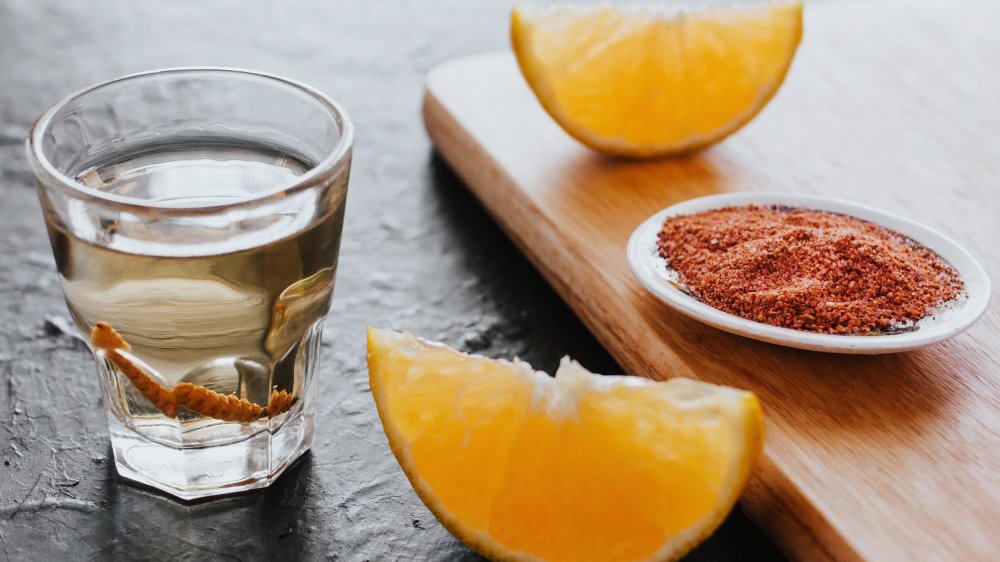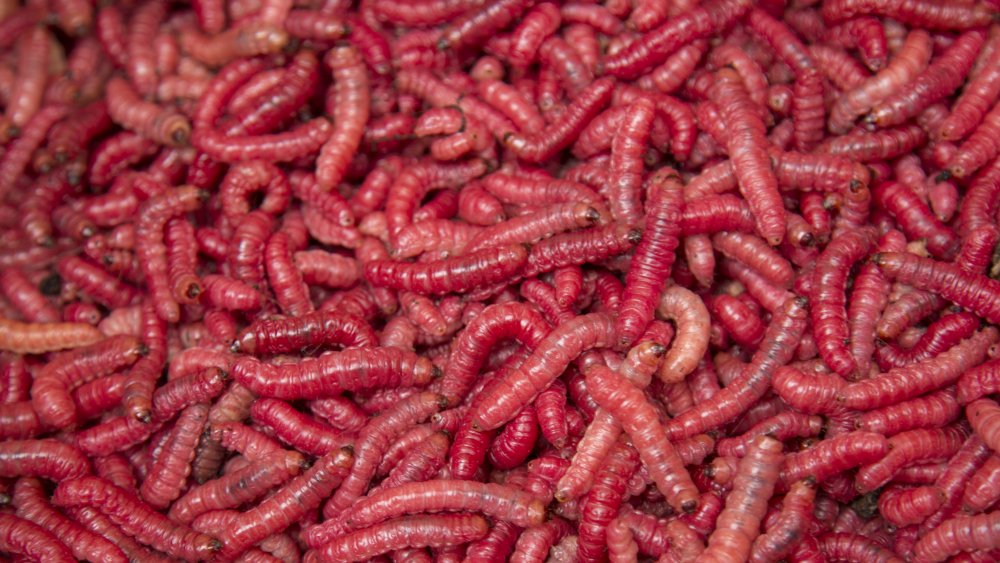The Real Reason Some Mezcal Bottles Have Worms In Them
Culinary Lore claims the belief that it is traditional for there to be a worm at the bottom of a bottle of tequila or mezcal is widespread. The thought behind the gesture is that a high proof, high-quality spirit would preserve the insect and prevent it from rotting. A decomposing bug or (no bug at all) could be an indicator or low qualify, inferior mezcal.
This myth is thought to have begun as a marketing ploy in the 1940s to try to get more people to drink mezcal, according to Vinepair. It was dreamed up by art student and mezcal producer Jacob Lorenzo Paez, who believed that adding the worm would change the drink's flavor. This idea allegedly came from the fact that sometimes the insects are mistakenly roasted with the agave heart, which they feast and live on, but is also the primary ingredient used to make mezcal.
Another theory is that the decision was motivated by marketing alone. During this time, Americans were very familiar with tequila, and mezcal needed a way to distinguish itself from the similar spirit. Mezcal importers and companies marketed the maguey worm in the bottle as an indication of purity, with some suggesting that consuming the bug would offer the daring eater strength or good fortune.
The worm is not even a worm at all
Vice claims the worm found floating at the bottom of some bottles of mezcal isn't even a worm at all — but a caterpillar. This bug comes in two varieties which are different colors, but both are referred to under the same name — the maguey worm. They state that the red caterpillar is more desirable than the white, but both are eaten widely throughout Mexico.
These larvae are even two totally different species of caterpillars, according to Atlas Obscura. The white variety is actually the larvae form of the Tequila Giant-Skipper Butterfly, and the red becomes the Comadia Redtenbacheri Moth if allowed to mature. Both were considered a great source of protein by the Aztecs, and they compare the flavor of the worms to fried pork skin, claiming it has a nutty taste. Today, these little guys can be found anywhere from street food to upscale dining, in tacos, topping guacamole, or ground up into a seasoning powder called sal de guasano, which can be paired with a lime to accompany — of course — a shot of mezcal.

